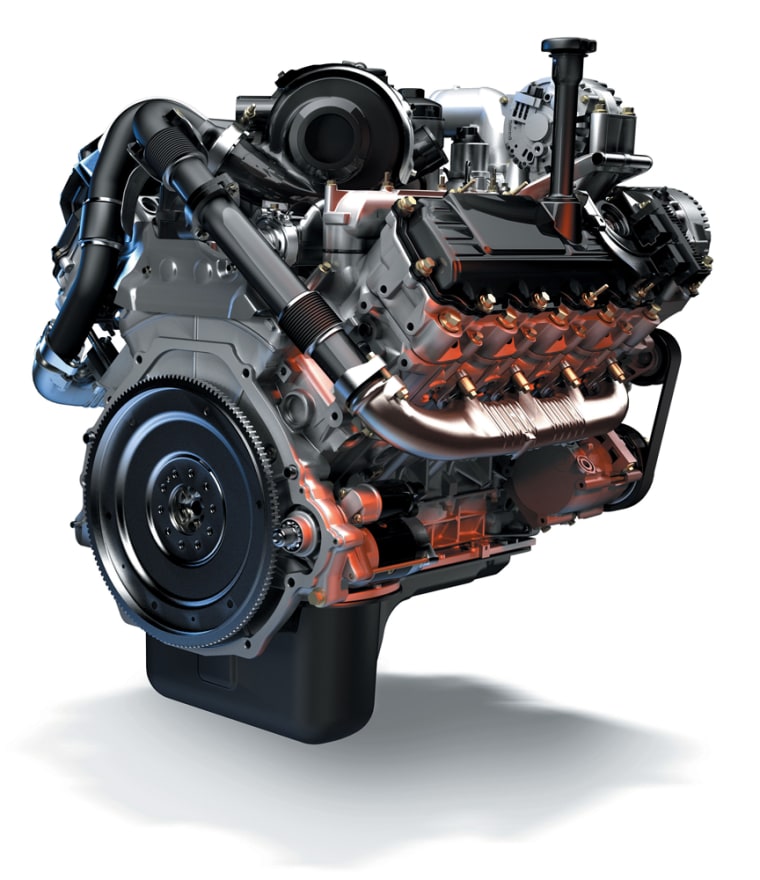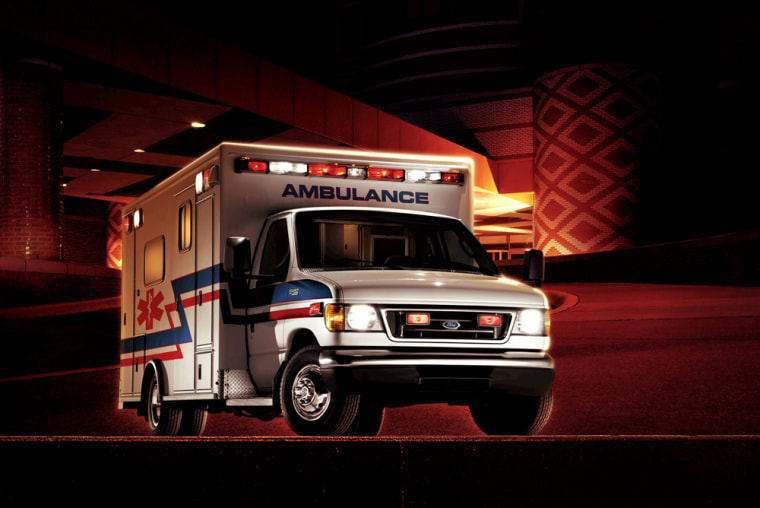A long-running dispute between Ford and its diesel engine supplier could have an unlikely victim — the nation's ambulance operators.
Navistar last week agreed to comply with a state court order and resume shipments to Ford of the powerful 6.4-liter diesel engines made by its International Truck and Engine unit. That allows Ford to continue production of its highly profitable line of F-Series Super Duty pickups.
But the court order and agreement between the two companies did not extend to an older line of 6-liter engines used to build more than 90 percent of the nation's ambulances. As a result, production of new ambulances has ground to a halt and isn’t likely to resume any time soon.
If the manufacturers of ambulances can’t produce new ambulances, the impact is obvious, said Fergus Laughridge, president of the National Association of State EMS Officials: “Emergency responders are not going to have vehicles that are of the standard [to which] they are accustomed,” he said.
The clash began in 2002 when problems with the engines prompted Ford to sue International, seeking to recover warranty repair costs. Ford withheld payments to International as compensation for its expenses.
Navistar, exclusive supplier of diesel engines for the Super Duty pickups since 1979, briefly halted shipments to the automaker in late February, threatening production of a vehicle that is critical to the fortunes of the struggling automaker.
While Navistar has agreed to resume shipments of the pickup truck engines, Ford has already run out of the engines used for ambulances and has halted shipments of the van chassis used by ambulance operators, according to Kristin Kinley, a Ford spokeswoman. “Right now, we don’t have any of the engines,” she said. “We have depleted our supply.”
The engines are ready and waiting, according to Roy Wiley, a spokesman for International. “You will have to ask Ford why they don’t want to pay the price for them,” he said.

Ford declined to comment on Wiley’s statement, with Kinley saying only that the problem is “a supplier issue.”
The issue is a minor one for Ford, because only about 10 percent of the 180,000 E-series vans sold by the company annually use the diesel engine.
But the production shutdown will affect ambulance operators and the people they transport in all types of communities, according to Laughridge of the EMS group.
Rural fire departments and ambulance services tend to put off replacing their vehicles as long as possible, while urban operators run their vehicles almost continuously. In both cases, vehicles tend to rack up so many miles that they are worn out quickly, he noted.
The shortage could be especially critical in newly built "exurbs" that might have to rely on vehicles based miles away if they cannot obtain new ambulances, he said.
“The ability to expand service is going to be greatly diminished if [ambulance services] aren’t able to procure new vehicles,” he said.
Ambulance operators are in trouble because the industry has settled on a a single chassis and powertrain as the foundation of virtually all new ambulances — the Ford E-series cutaway, said Mike Kastner, government relations director for the National Truck Equipment Association.
That’s the vehicle that looks like the front end of a van onto which specialty constructors graft their own bodies to build airport hotel shuttle buses, moving vans, mini school buses or the mobile emergency rooms that are today's ambulances.
About 92 percent of ambulances based on the cutaway chassis use Ford’s E-series full-size van with International's PowerStroke 6.0-liter diesel engine, as do 97 percent of new ambulances built on converted vans.
Because ambulance builders’ parts and tooling are designed specifically for this vehicle, it’s not easy for them to simply buy another manufacturer’s chassis cab or even use a Ford product with an alternative gasoline engine, the association said.
Ambulance operators do have options. They can put a gas engine in their Ford van-based ambulance, use an ambulance based on a diesel Ford Super Duty pickup truck or switch to a different chassis supplier, such as General Motors or Chrysler.
Bill Vidacovich, vice president for maintenance for Acadian Ambulance Service in Louisiana, one of the few companies that does not use the Ford van platform, thinks switching is the solution.
If Acadian faced a lack of new ambulances, “I would have to do what it takes to meet my demand,” he said. “If that means going to a different manufacturer, you can bet we’d be figuring that out.” Acadian uses diesel-powered ambulances built on Chevrolet’s one-ton truck chassis.
The gas engine alternative is less attractive, because the diesel engines get better gas mileage and the cost of fuel is critical for ambulance services such as Acadian, which used more than a million gallons of fuel in its fleet last year, Vidacovich said.
The diesel engines also last longer, he added.
“I’m not very interested in gas engine vehicles,” he said.
